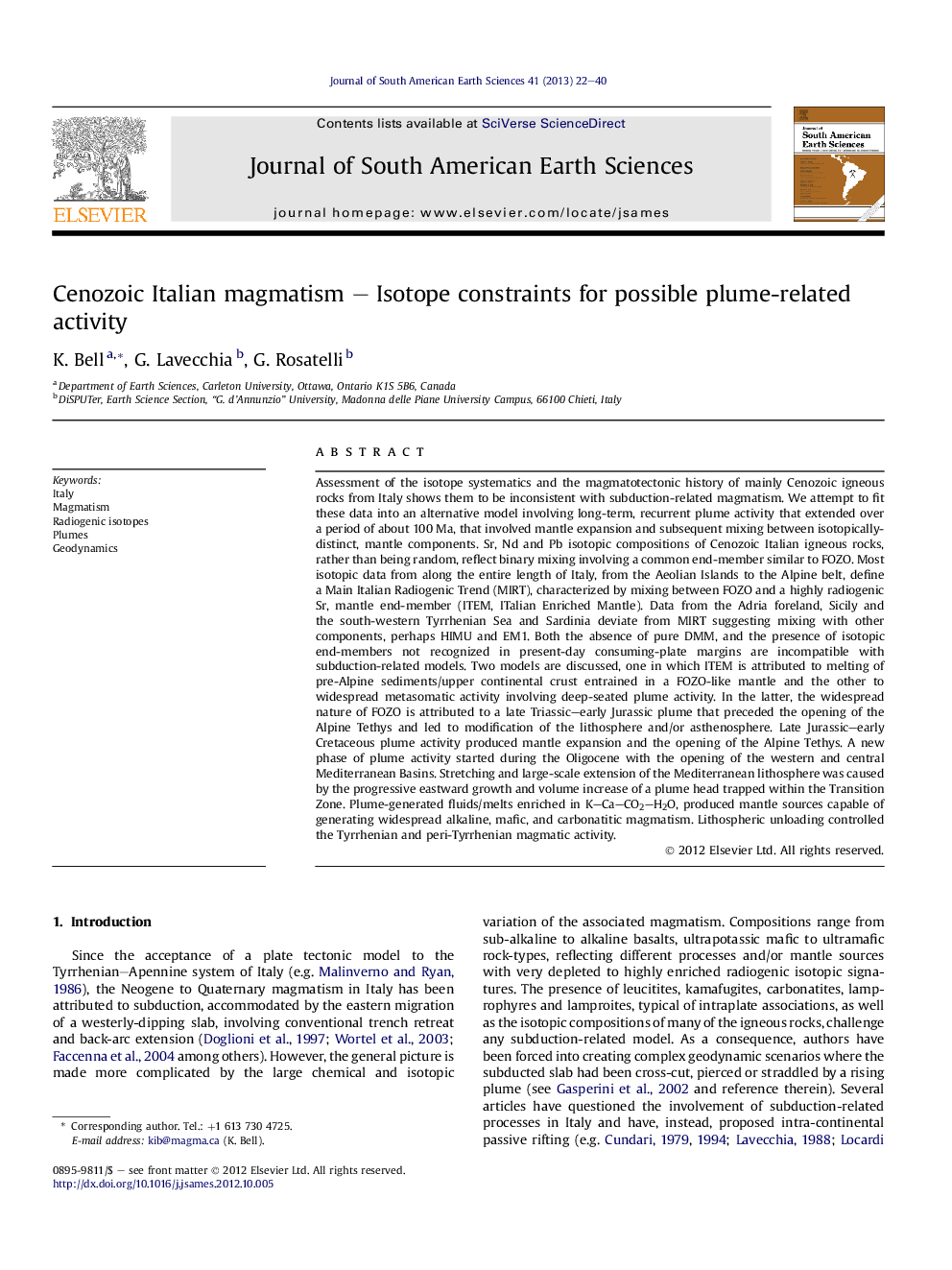| Article ID | Journal | Published Year | Pages | File Type |
|---|---|---|---|---|
| 4682456 | Journal of South American Earth Sciences | 2013 | 19 Pages |
Abstract
Assessment of the isotope systematics and the magmatotectonic history of mainly Cenozoic igneous rocks from Italy shows them to be inconsistent with subduction-related magmatism. We attempt to fit these data into an alternative model involving long-term, recurrent plume activity that extended over a period of about 100 Ma, that involved mantle expansion and subsequent mixing between isotopically-distinct, mantle components. Sr, Nd and Pb isotopic compositions of Cenozoic Italian igneous rocks, rather than being random, reflect binary mixing involving a common end-member similar to FOZO. Most isotopic data from along the entire length of Italy, from the Aeolian Islands to the Alpine belt, define a Main Italian Radiogenic Trend (MIRT), characterized by mixing between FOZO and a highly radiogenic Sr, mantle end-member (ITEM, ITalian Enriched Mantle). Data from the Adria foreland, Sicily and the south-western Tyrrhenian Sea and Sardinia deviate from MIRT suggesting mixing with other components, perhaps HIMU and EM1. Both the absence of pure DMM, and the presence of isotopic end-members not recognized in present-day consuming-plate margins are incompatible with subduction-related models. Two models are discussed, one in which ITEM is attributed to melting of pre-Alpine sediments/upper continental crust entrained in a FOZO-like mantle and the other to widespread metasomatic activity involving deep-seated plume activity. In the latter, the widespread nature of FOZO is attributed to a late Triassic-early Jurassic plume that preceded the opening of the Alpine Tethys and led to modification of the lithosphere and/or asthenosphere. Late Jurassic-early Cretaceous plume activity produced mantle expansion and the opening of the Alpine Tethys. A new phase of plume activity started during the Oligocene with the opening of the western and central Mediterranean Basins. Stretching and large-scale extension of the Mediterranean lithosphere was caused by the progressive eastward growth and volume increase of a plume head trapped within the Transition Zone. Plume-generated fluids/melts enriched in K-Ca-CO2-H2O, produced mantle sources capable of generating widespread alkaline, mafic, and carbonatitic magmatism. Lithospheric unloading controlled the Tyrrhenian and peri-Tyrrhenian magmatic activity.
Related Topics
Physical Sciences and Engineering
Earth and Planetary Sciences
Earth and Planetary Sciences (General)
Authors
K. Bell, G. Lavecchia, G. Rosatelli,
